64 Audio U12t Review: Old Faithful

64 Audio U12t Review
Written by Fc-Construct
Introduction
Saving the best for last, the final IEM in my journey through the 64 Audio line-up is the U12t. Introduced in 2017, the U12t has been near the top of pretty much every reviewer’s list since. Of course, long time readers of headphones.com will know that it is my friend Precogvision’s favorite IEM. Coming in at $1,999.99 and boasting 12 balanced armatures, the U12t is lies roughly in the middle of the 64 Audio stack. But as anyone who’s been in the hobby for a while knows, it’s not always the highest end model that gets all the attention. My goal for today’s review is to determine for myself if the U12t is all that it’s cracked up to be.
- Product Summary
- Accessories and Build
- Sound and Frequency Response
- Instrument Notes
- Presentation
- APEX Modules
- Comparisons
- Conclusion
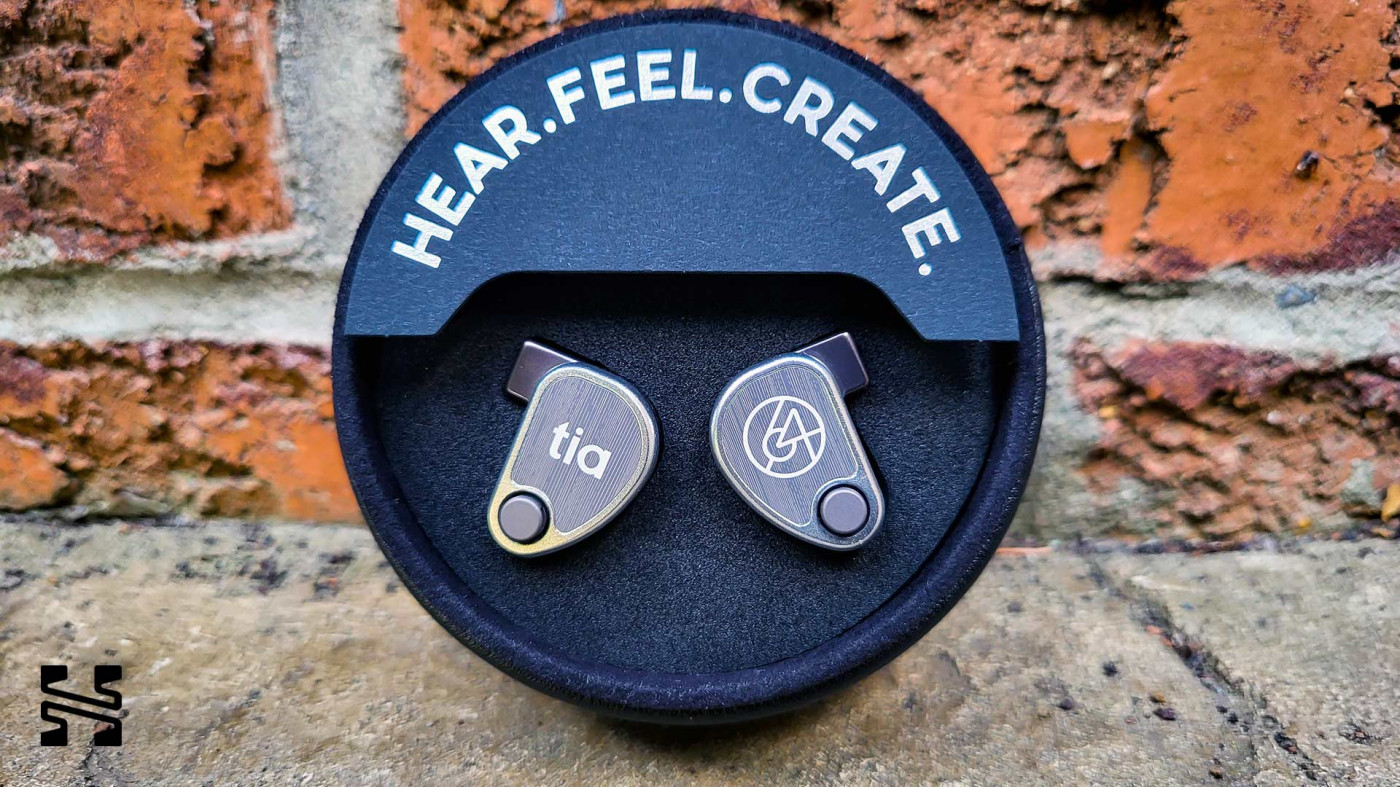
64 Audio U12t - Product Summary
- Reasons to buy
- Exceptional Resolution and Refinement
- Great Soundstage and Imaging
- Excellent Bass Quality and Dynamics
- Reasons not to buy
- Minor Oddities in the Treble
 |
Get the 64 Audio U12T for the best available price at headphones.com. |
What’s in the Box
Like the other 64 Audio IEMs, the U12t has an ergonomic metal shell. Other than the APEX module, there are no other vents on the shell. That said, it’s plenty comfortable IEM with little pressure build in-ear. The faceplate has an understated faux wood grain design made of aluminum.
The U12t comes with 64 Audio’s standard suite of accessories:
- Two different sets of silicon and one set of foam tips S/M/L sizes all held in a fancy circular tip holder. For this review, I opted to use the Azla Sedna tips as the stock tips didn’t fit me too well and I had used these tips for my other 64 Audio IEM reviews.
- The m20, m15, and mX APEX modules which modify the bass response of the U12t depending on which you choose. I will be using the m15 module for the majority of this review as that is the “default” set.
- 8-core braided 2-pin cable with pre-molded earhooks. It’s an OK cable, a little rubbery and has some cable memory but not one I’d immediately swap out like the older stock cables.

Sound and Frequency Response
Within the first minute of listening to the U12t, I can understand why so many others hold it up to such a high regard. It’s undeniably effortless, coherent, and refined. Of course, while that’s used to describe any IEM worth its salt, the U12t really does take it to the next level. While it excels in pretty much every parameter I judge an IEM by, the true strength of the U12t’s performance is that it’s more than the sum of its parts. 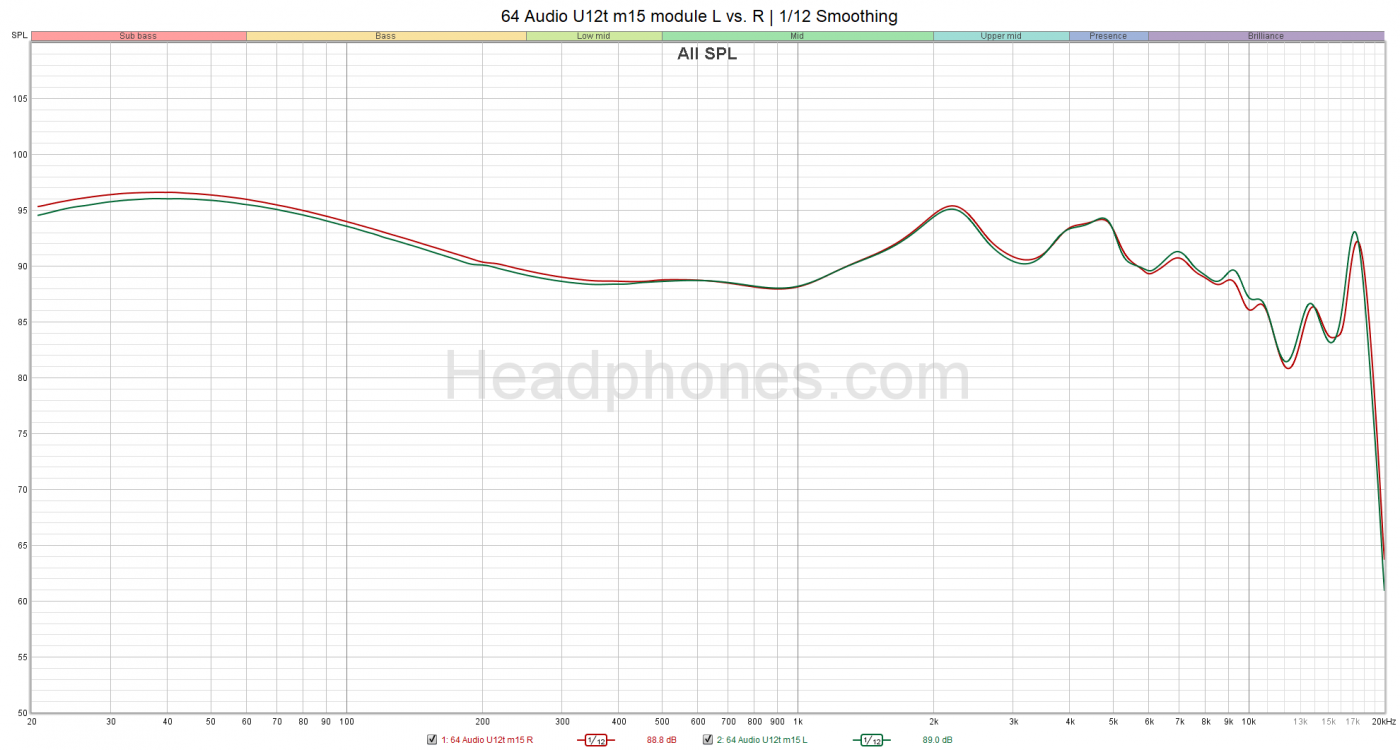
Frequency response of the 64 Audio U12t using the m15 APEX modules. Measurement taken with an IEC-711 clone microphone. Comparisons can only be made relative to other measurements taken by this specific microphone. A peak at about 8 – 10 kHz is likely an artifact of the measurement rig and may not exist as depicted here. Measurements above 8 kHz are not accurate. If possible, reference multiple measurements.
The tuning of the U12t isn’t anything groundbreaking. A substantial bass shelf < 200Hz, a pinna peak of 2 kHz, and sustained treble extension. It’s a good all-rounder tuning that works with little complaint but isn’t particularly unique or exciting. Overall, the U12t has a bassy profile that’s otherwise well balanced.
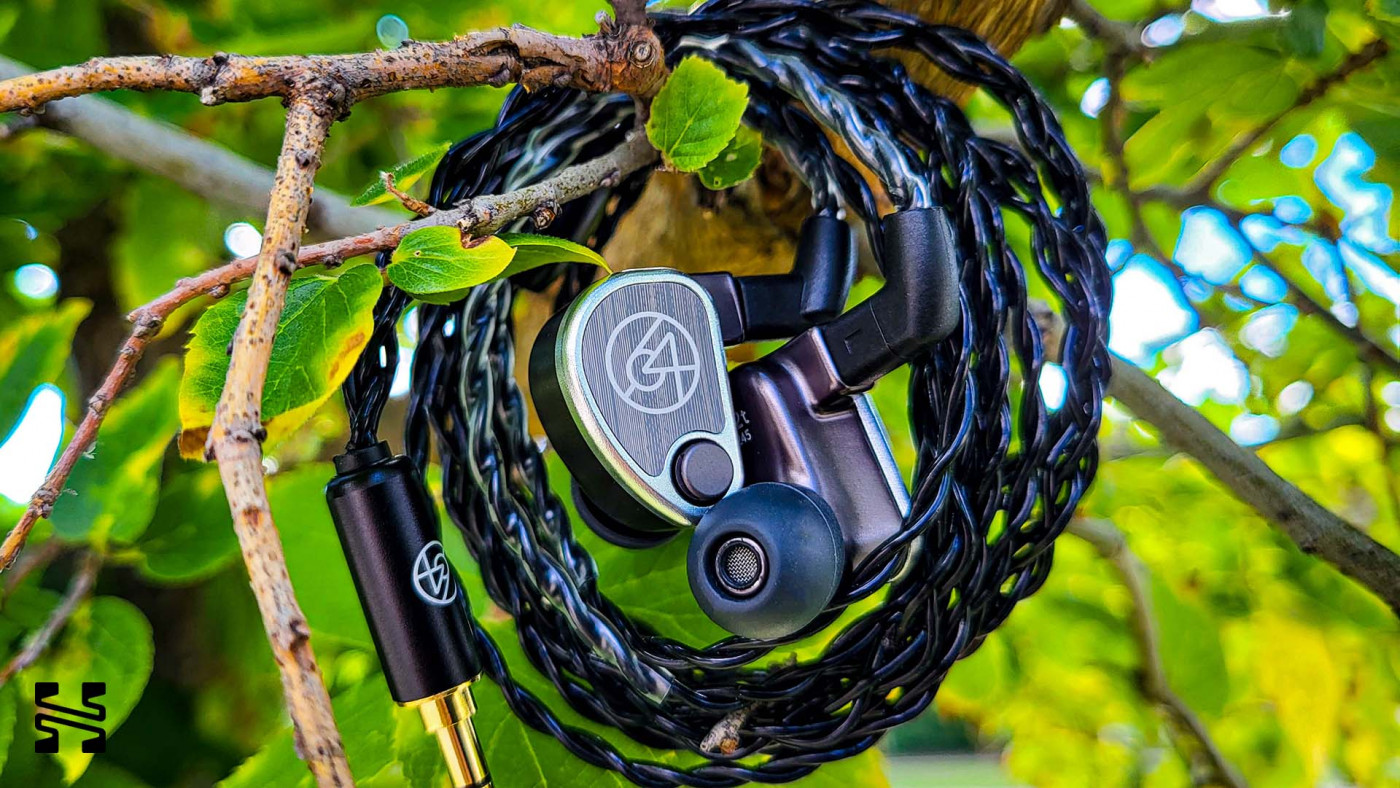
Instrument Notes
Drums
If you’re familiar with U12t reviews, the quality of its bass is almost universally brought up as one of its greatest strengths, though usually pre-qualified with “for a BA”. Having heard it myself, I can confirm that the bass of the U12t is definitely one of its highlights and is most apparent with the kick and toms.
The attack of the U12t’s bass is a little rounded instead of leading with a sharp transient edge as you might expect from a BA. As such, there is a minor loss of note definition kick’s beater head. The U12t’s bass resolution and articulation is superb, though I think the U18s is slightly more nuanced with the floor/low toms. As a whole, the U12t is not a punchy, midbassy IEM. Its bass shelf is tuned with a focus for more of a deeper response to track the low toms and kick’s body.
Note decay is surprisingly weighty, even beyond what you might expect from its frequency response. Unlike the bass dominant, DD driven Nio, the U12t’s bass impact isn’t always at the forefront of every note. But in solitary moments such where the drums are meant to carry the passage the U12t absolutely delivers. The depth and impact the U12t brings at the moment when the kick and toms are engaged can honestly be eye-opening at times. I haven’t heard any other BA IEM demonstrate this level of gravity in the bass. And truthfully, I prefer it to many DD based IEMs.
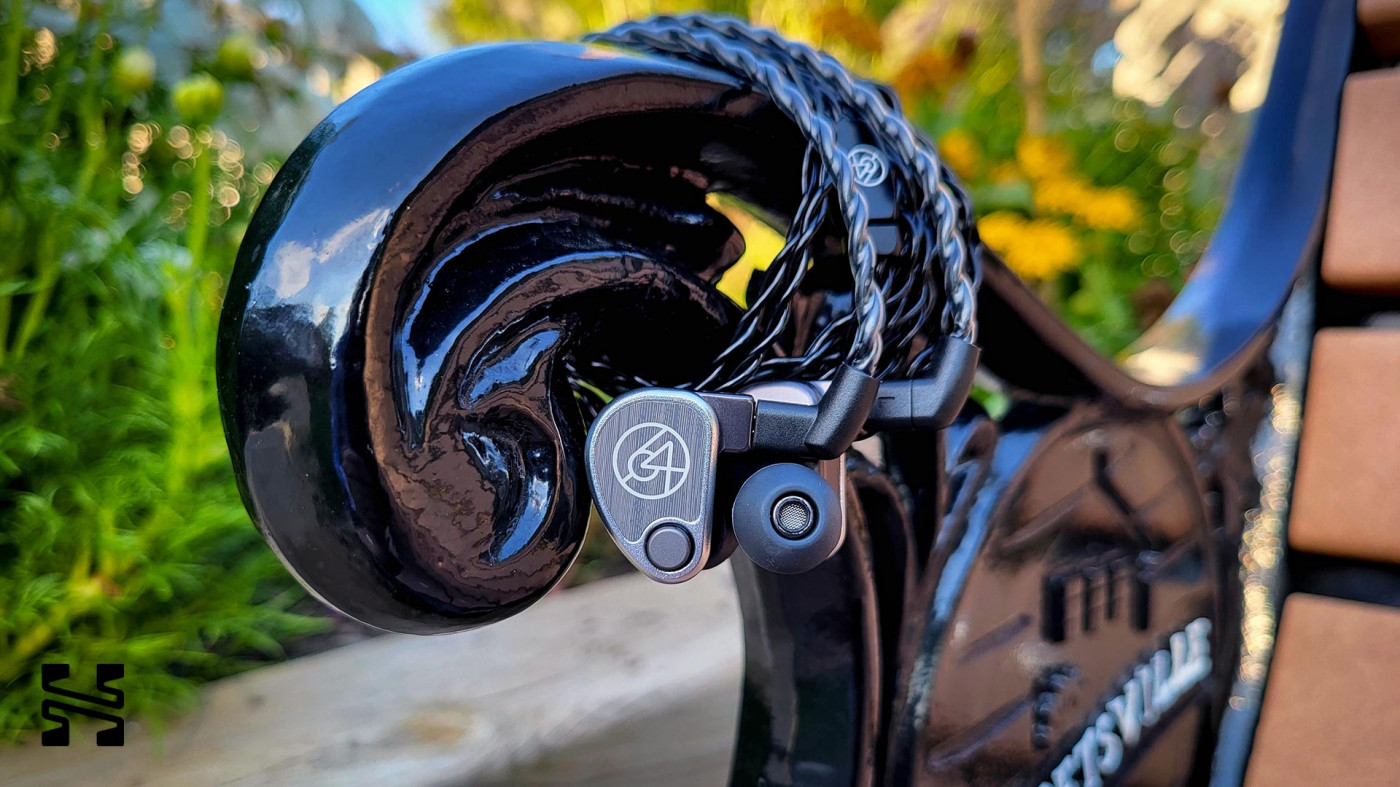
Contrary to my usual preferences, I find that the hats and cymbals are a little in-your-face on the U12t. These instruments have a disproportionate amount of focus on them and manifests in two ways. The first is that on some fast-paced songs, the hats can have an overly crisp attack with minimal decay. I don’t hear much of the stick impact itself – rather, it’s the constant clicking of the hats without the body or shimmer. There is also a slight brittleness at times. Thankfully these notes aren’t thin or sharp however, preventing them from being fatiguing.
The second is that I find the cymbals on the U12t to be occasionally splashy in somewhat shallow sort of way. If I had to guess based on the frequency response, the 4 – 5 kHz lower treble gain immediately followed by a flattening in the rest of the treble is what’s causing both of these phenomena. I would prefer if they had a more relaxed presentation to complement the other instruments instead of continuously drawing my attention.
That said, these are minor complaints for my own preference. Nitpicks aside, I really do enjoy the way the U12t handles the hats and cymbals. The tonal balance leans warm rather than brilliant and bright. Resolution, nuance, and note articulation are confident. There’s a sweet sense of transparency, like I’m hearing exactly the hats and cymbals were mic’d and recorded.

Strings and Keys
There’s little to comment on with the strings and keys. They have a rich tonality that’s pleasing to listen to. I have no complaints with the timbre. The bass guitar is equally proficient at deep, filling notes and rapid-fire bass lines. Acoustic guitars are lush in strums and clean with fingering. Electric guitars have a gritty, bodied tone and lead lines brimming with clarity. Pianos are full and there is a realistic weight behind every note. The U12t’s midrange renders all of these instruments with complete ease.
Vocals
The U12t’s vocal tuning is fairly neutral, in an almost boring sort of way. Male and female vocals perform equally well with no harshness or sibilance to speak of. Their positioning is excellent – a subtle forwardness combined with a clarity that keeps them from ever getting lost in the mix. Individual vocalists in a chorus are easily picked out and tracked. I do have one small nitpick, however. The vocals are slightly thick and could use a bit more “breath” to open up the sound. Looking at the frequency response graph, I can see why. The 3 kHz dip is responsible for the loss of some of that upper mids presence. I would prefer if either the 2 kHz pinna peak be shifted more towards the 2.5 kHz mark or if the dip was softer. Either way, this is a small preference complaint for something I tend to look for in vocals. 
Presentation
Like the other 64 Audio IEMs, soundstage and imaging are superb. Stage width and depth are expansive but not overly so. Imaging is close to pinpoint precise while maintaining a sense of naturality. Instruments on the periphery are highlighted nicely while notes found just outside center stage demonstrate great nuance in stereo panning. The best way I can describe the instrument separation and layering is to imagine every instrument lined up in a DAW and watching them play; separate, distinct, layered tracks but one altogether cohesive musical score.
The U12t is one of the most resolving IEMs I’ve heard to date. Even listening casually to it, notes and melodies and countermelodies are effortlessly displayed for me to take in. The U12t consistently eeks out just a little more from each instrument. For example, the low rumbling vibration of the bass guitar’s strings as it fades out after being plucked is so clearly heard on the U12t when it’s often passed over by other IEMs. It’s these trailing ends of tones that add a deeper dimension to familiar tracks and make the experience all that more enjoyable. Dynamics on the U12t is similarly top notch. The gravity and weight of the bass impact can be hugely satisfying when the notes line up just right. Overall, the U12t has a refinement and coherency that ties its entire performance together and elevates it beyond the sum of its parts.

APEX Modules – m15, m20, and mX
As with the other 64 Audio IEMs equipped with the APEX system, the U12t comes with three tuning modules. The m15 (dark grey) and m20 (silver) modules are largely similar with about 1 – 2 dB more subbass on the m20 filter. In the case of the U12t, I do prefer the m20 module as it enhances the low-end oomph while taking advantage of the U12t’s extremely well controlled bass response.
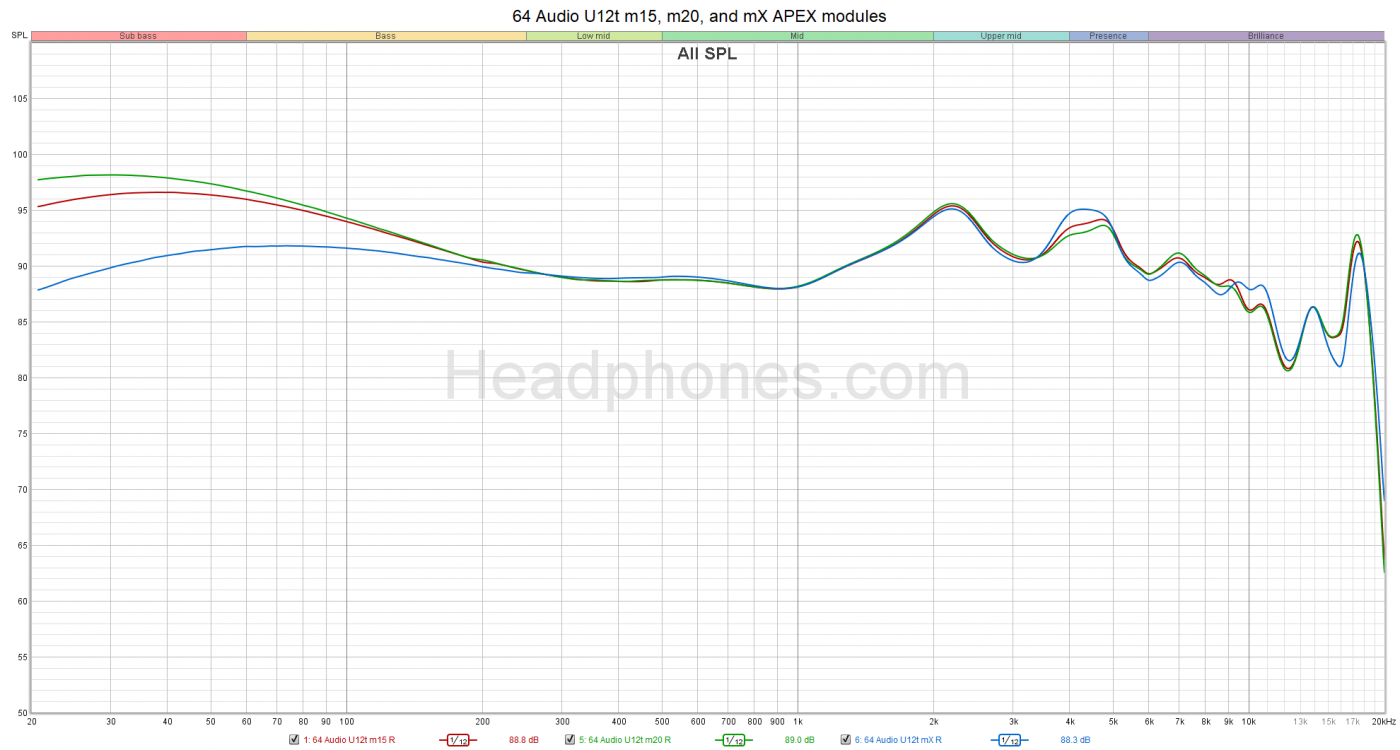
The mX (black) module removes the bass shelf of the U12t and leaves it with a primarily midbassy response. The tuning becomes much more mid forward with vocals gaining more prominence and the thickness is dissipated. Similarly, the snare drum stands out in tracks with each crack of its head. Interestingly, my nitpicks with the hats and cymbals are mostly resolved. No longer do I feel that they take more of the spotlight than they should. However, I do think they take on a bit of a trashy sound. While the U12t does sound quite good with the mX module, I wouldn’t really use it. The loss of the bass shelf takes away a lot of what made the U12t great – its bass dynamics and body. Though there is plenty of midbass punch and energy, it feels like its trying to perform as if it still had its bass shelf and comes off as lacking.

Love our in-depth reviews?
We test and review hundreds of headphones every year. Sign up to get the latest news, reviews, guides, and more in your inbox. Join the 60,000+ like-minded audio lovers who love our newsletter!
Comparisons
64 Audio U6t and U18s 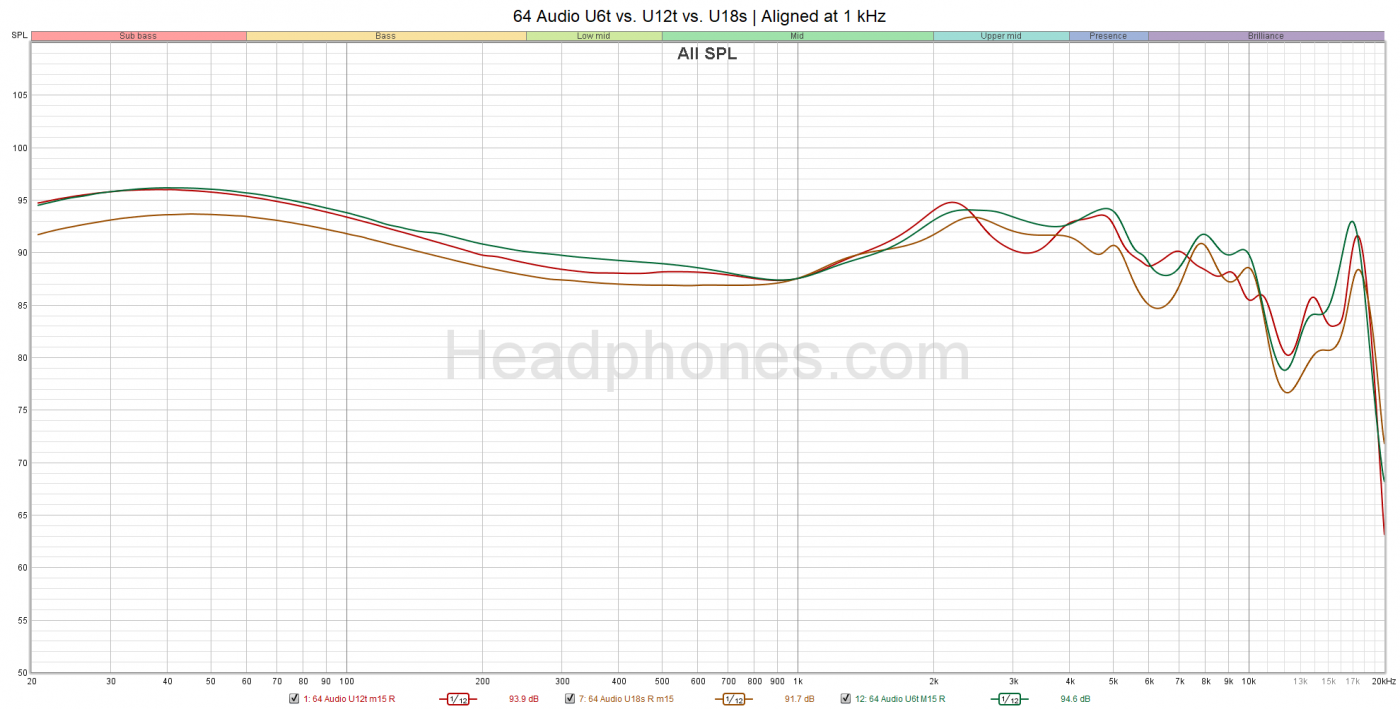
Although the U12t falls squarely between the $1,299 U6t and $2,999 U18s in both price and driver count, I think the U18s has more in common with the U6t than the U12t. Tuning wise, I would go U18s > U12t > U6t. The U6t is effectively a thicker variant of the U18s. Technical performance would be U12t > U18s > U6t. The U18s is only slightly behind the U12t while the U6t is a relative distant third. While they certainly share a lot of the same DNA – relatively balanced tuning, sizable bass shelf, APEX system, solid staging, and bass dynamics, the U12t’s refinement in resolution, dynamics, and layering is a cut above.
64 Audio Trio 
The $2,299 Trio has a rather aggressive sound to it and presents its sound upfront with no holds barred. In comparison, the U12t is more laid back and lets the listening explore the music a little more at their leisure. With the exception of the Trio’s DD, the U12t does slightly edge out the Trio in technical performance, once again, with better overall refinement. As far as tuning goes, the Trio’s is somewhat wonky while the U12t’s is much more conventional. As such, I do think the U12t is generally the better IEM. However, the uniqueness of the Trio’s presentation may bias someone towards it. I would strongly encourage anyone to try them both before finalizing a choice between these two IEMS.
64 Audio Nio 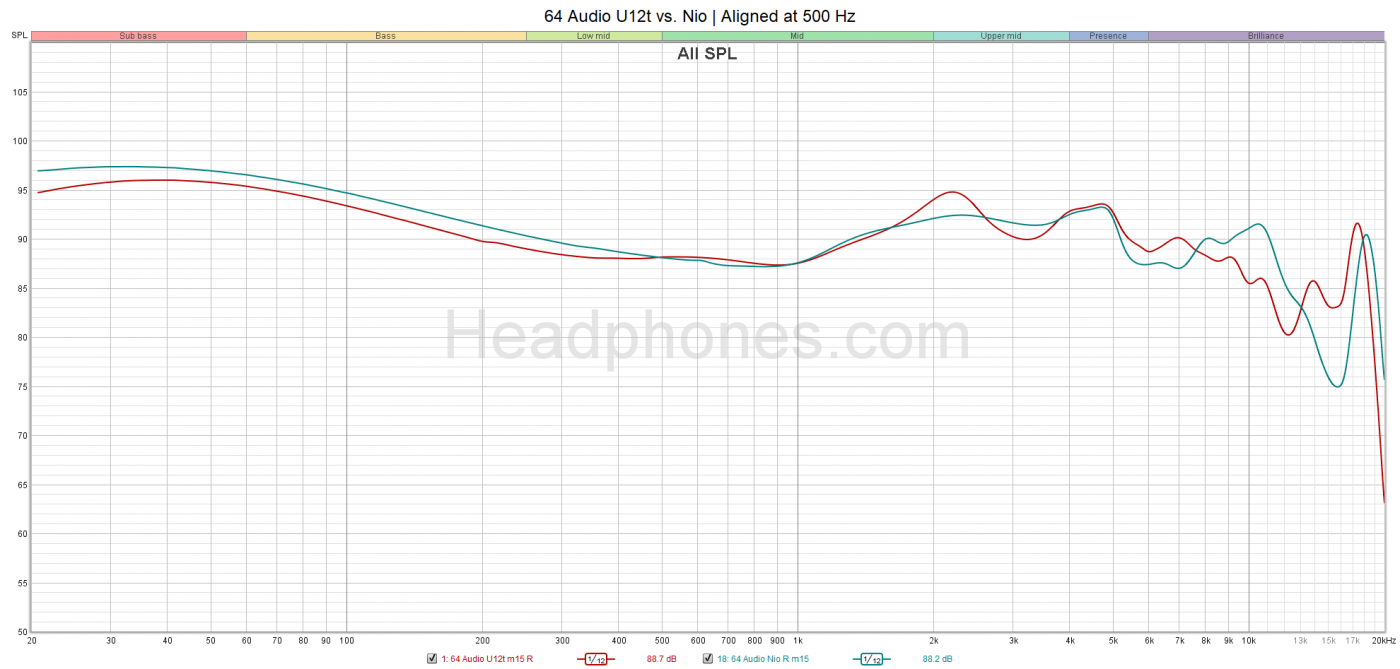
Like the Trio, the $1,699 Nio was a surprise hit for me. I really enjoyed both IEMs from the outset upon listening to them. The tuning of the Nio takes a different approach from the U12t. Though it looks to graph fairly similarly, it’s more of a basshead IEM than the U12t is. Yet, it maintains an exceptional level of technical prowess despite the abundance of low-end energy. I think its imaging is better than the U12t, particularly for the drums, but falls behind in resolution as it isn’t able to eek out as much low-level detail from the trailing end of tones compared to the U12t. I think the choice here is rather straightforward. Do you want a basshead IEM or something more balanced overall? Personally, I lean a little towards the Nio. There are reference-class TOTL IEMs galore but great basshead IEMs are few and far between. But as an all-rounder, the U12t is king.
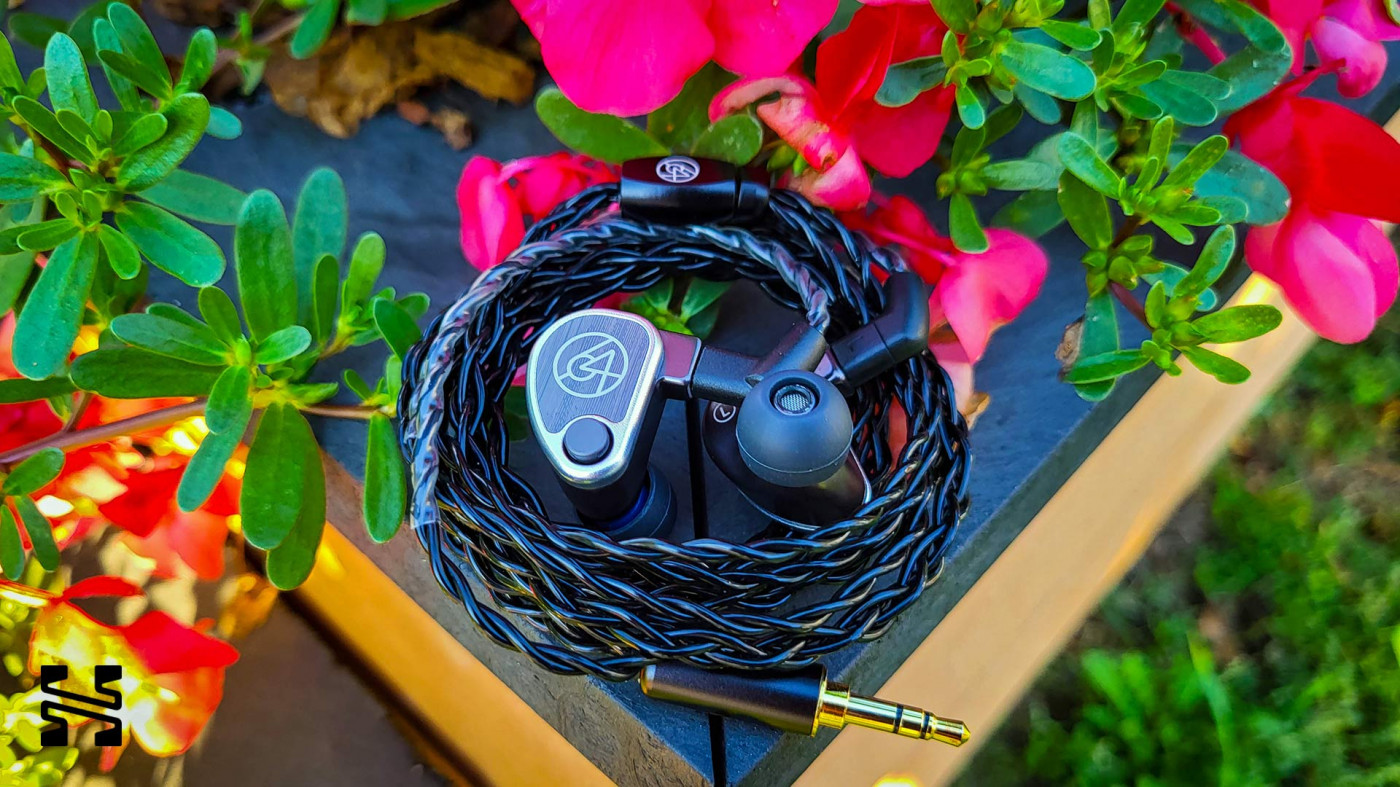
Should You Buy It?
Yes. While I’m not convinced the 64 Audio U12t holds the title of “best” IEM (if there even is such a thing), the fact that it’s a serious contender for the crown speaks volumes for its performance. Despite my initial skepticism around its hype, I can’t help but acknowledge that the U12t is a very complete package. While it might not be the most exciting or unique IEM out there, its technical performance is undeniably among the best the market has to offer. Combine that with a jack-of-all trades tuning and you have an IEM that’s practically made to sit near the top of recommendation lists. At $1,999, the U12t isn’t exactly cheap. But with exotic new flagships reaching the four or five thousand dollar mark these days, I can’t help but feel that the 5-year-old U12t has now become something of an old faithful.
